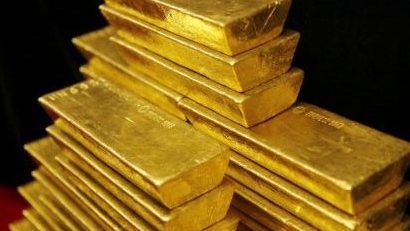Gold’s strong performance since the start of 2017 has reinvigorated interest among investors in gold mining stocks. While it is predominantly the big names that attract attention, some of the better investments are among the smaller players in the industry. One opportunity that stands out for all the right reasons is Kirkland Lake Gold Ltd. (TSX:CRK).
Now what?
An appealing aspect of Kirkland is the quality of its gold-mining assets and the fact that they are located in the stable, low-risk mining-friendly jurisdictions of Canada and Australia. The miner owns and operates three mines in Canada and two in Australia, which have reserves of 3.7 million ounces of gold between them.
Impressively, these reserves have an average ore grade of 7.5 grams per tonne, which is quite high when compared to many other operators in the industry.
Kirkland’s mines include the Macassa mine, which is regarded by analysts to be the second-highest grade underground operation globally because of its astounding ore grade 22 grams of gold per tonne of ore.
This is particularly important for investors to note because the higher the ore grade, the more cost effective it is to extract the gold. The high ore grade of its reserves is reflected in Kirkland’s low-cost structure. For the first quarter 2017, all-in sustaining costs (AISCs) were US$873 per ounce of gold produced, which is well within the US$850-900 per ounce Kirkland has budgeted for the year.
Because of these high ore grades, Kirkland’s AISCs are lower than many other miners. This includes B2Gold Corp. (TSX:BTO)(NYSE:BTG), which reported first-quarter AISCs of US$889 per ounce and has budgeted US$940-970 per ounce for the year. For the same period, IAMGOLD Corporation (TSX:IMG)(NYSE:IAG) reported AISCs of $992 per ounce and has a full-year forecast of US$1,000-1,080 per ounce.
The quality of Kirkland’s mining assets has allowed it to grow production at a solid clip.
For the first quarter 2017, gold production more than doubled compared to the equivalent period in 2016, although this can be attributed to the acquisitions Kirkland completed during 2016. Even after adjusting for these deals, full-year production is forecast to be 530,000-570,000 ounces — 5% higher than the pro-forma consolidated results for a year earlier.
Another important aspect when choosing to invest in a miner is the strength of its balance sheet, because mining is a capital-intensive industry that requires considerable financial resources to build reserves as well as production.
Here, Kirkland also stands out for all the right reasons. It had a highly liquid holding of almost US$280 million of cash on hand at the end of the first quarter. While long-term debt, including finance leases and provisions, comes to a very manageable US$57 million.
So what?
Kirkland is a very appealing play on higher gold prices because of its low costs, growing production, and solid balance sheet. It is also attractively priced compared to its peers with an enterprise value to 2017 production of US$2,714, which is almost half of its peer group average.
The strength of Kirkland’s financial position is illustrated by management’s decision to initiate a regular dividend payment; the first payment will be made in July 2017, and it will be a modest 0.44% yield.







